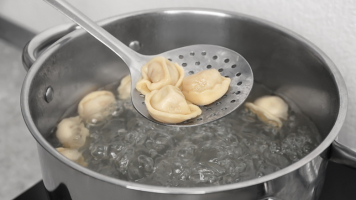Top 16 Best Tips You Need When Cooking With An Instant Pot
You might not know where to begin if you're new to team Instant. When there are so many misconceptions about pressure cooking online, it might be frightening. ... read more...Once you get the hang of it, you'll quickly produce delicious, simple meals. No matter how frequently you use your Instant Pot, these suggestions will help you keep it in top condition. Even if you are an expert at pressure cooking, you will learn a few new helpful tips. Here are the best tips you need when cooking with an instant pot.
-
After your meal is cooked, there are two ways to release the pressure from your Instant Pot. Activating the quick release switch is the quickest way to accomplish this. A steam jet will then emerge from your Instant Pot's pressure valve as a result of this. This technique is fantastic since it enables you to open the lid securely in a short amount of time, but it isn't the best option for all cooking situations. Hot broth can shoot out of the release vent during liquid-heavy preparations like stock that call for filling the pot all the way to the fluid line. This can make a huge mess and necessitate thorough cleaning of your pot's lid.
The quick-release is especially harmful when cooking dishes like oats that are starchy and produce a lot of froth. During fast release, this foam may seep out of the steam vent. Depressurization's rapid temperature loss could also render braised meats tougher. Natural release, which simply involves waiting for the food to cool down on its own, will produce better results for all of these uses and won't spray liquid all over your kitchen. Choose the hybrid method and wait for your food to sit for about 10 minutes before pressing the release switch if you don't want to wait that long.
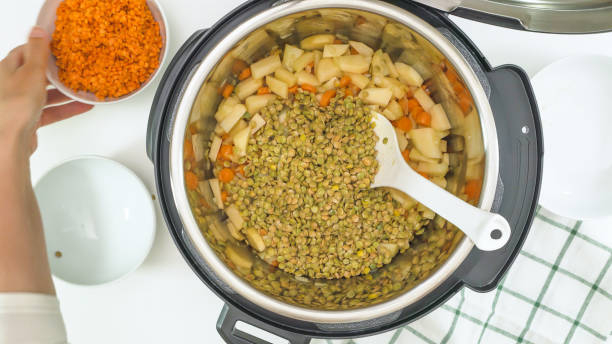
You shouldn't use the quick pressure release for everything 
You shouldn't use the quick pressure release for everything -
The condensed steam that the Instant Pot creates during cooking is intended to be collected in the tiny plastic cup that is included with the majority of Instant Pot models. Even while it's not technically required, it's good to avoid having to wipe a little puddle off your counter after each pressure cooker usage. It's so little compared to the rest of the Instant Pot experience that it's simple to overlook. However, don't ignore your condensation cup because failing to clean it might have disastrous results.
You will have a terrifying experience if you neglect to clean the damp condensation collector. The starchy water that had accumulated due to frequent use of the Instant Pot was being consumed by a full colony of ants that had settled inside the cup. It resembles a scene from a horror film.
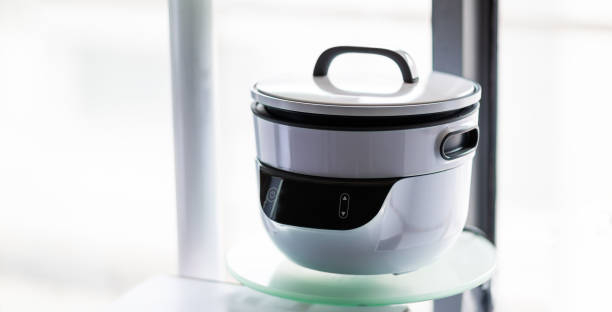
Don't forget to clean the condensation cup 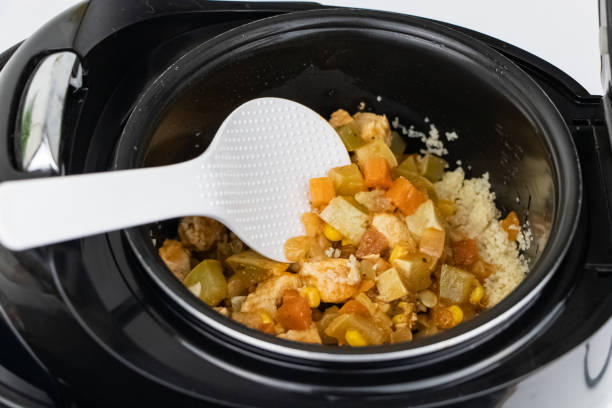
Don't forget to clean the condensation cup -
You should be careful not to unintentionally place any body parts in the line of the extremely hot steam geyser that your Instant Pot releases when it loses pressure. If you're not careful, the hot steam might potentially ruin your kitchen cabinets. If you often use your pressure cooker on the counter beneath your kitchen cupboards, the moisture from the steam may eventually cause damage. This form of moisture damage is particularly prone to affect paint and wood.
Although the maker of the Instant Pot cautions that closing the vent might result in an explosion, you might want to consider doing so to limit the steam flow. Consider purchasing a steam diverter if the layout of your kitchen makes it challenging to vent steam securely. These change the direction of the steam's flow so that it shoots sideways rather than straight up. Some of them even resemble entertaining dragons! However, because the Instant Pot wasn't made to function with them, you should always use caution while utilizing them.
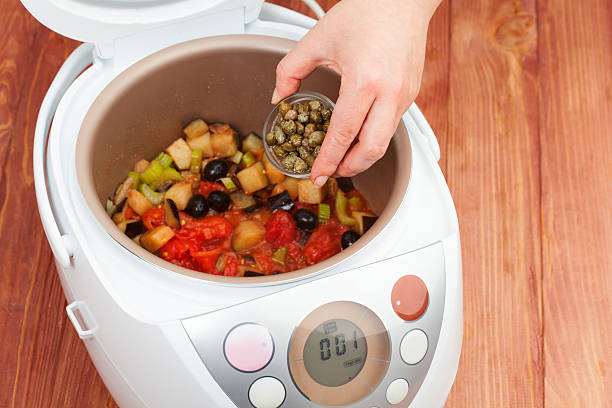
Be careful about the steam 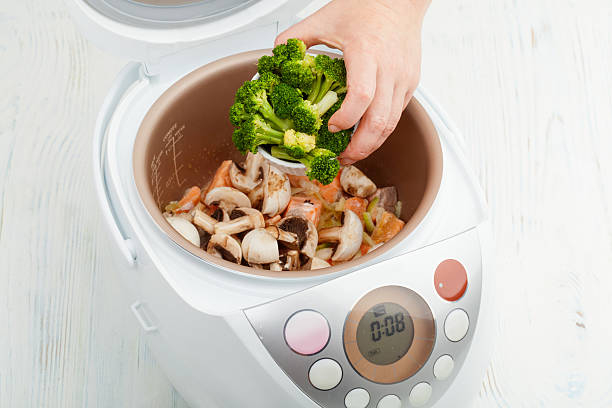
Be careful about the steam -
Your Instant Pot has to have a sealing ring in order to function properly. The sealing ring keeps liquid and pressure from leaking out of the cooking vessel and causing messes or even explosions. Since silicone is flexible and heat resistant, it is the perfect material for the sealing ring on an Instant Pot.
Because silicone is flexible, it isn't as strong as the remainder of the Instant Pot, which is constructed of hard plastic and stainless steel. It's a good idea to change the sealing ring on occasion so that you don't have a failure while cooking. If you use your Instant Pot frequently, think about purchasing a new sealing ring every year or so and replacing it more frequently. Given how essential the ring is to the operation of your pressure cooker, it's a good idea to keep an extra ring hidden away in case of emergency.
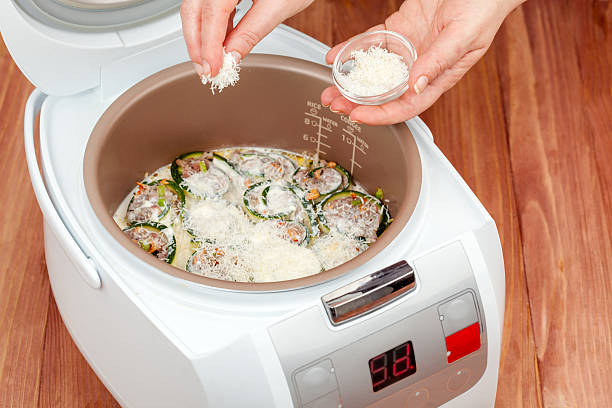
You need to replace the sealing ring on your Instant Pot regularly 
You need to replace the sealing ring on your Instant Pot regularly -
Even a seasoned pressure cooker pro may have convulsions when they see the dreaded "burn" error warning on an Instant Pot's display. Even though you might be worried that your pot is filled with the burned remains of a perfectly fine pot roast, chances are that you can still save your meal from burning. When food begins to stick and burn to the bottom of the pot, your Instant Pot detects this and displays the "burn" error. This often occurs when you try to cook with either too little liquid or too thick of a liquid.
To correct a "burn" mistake, press "cancel" to put an end to the Instant Pot's cooking process. After that, let the pressure out so you may reach the meal by opening the lid. The error message frequently appears before anything burns too severely. After giving your food a good stir and adding at least a half cup of water or stock, you can replace the lid and carry on cooking. Use a sturdy object to scrape off any food that has stuck to the pan's bottom if you want to avoid tripping the sensor once more.

If the 'burn' error comes on, you can still save your food 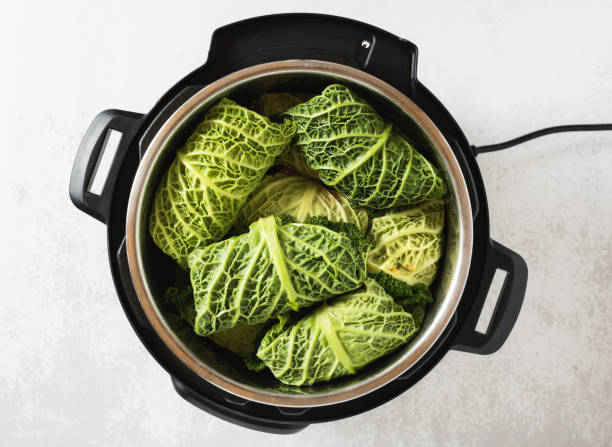
If the 'burn' error comes on, you can still save your food -
Except for the base and the power cable, every component of your Instant Pot is dishwasher-safe, including the complete lid. If you unscrew the lid before putting it in the washer, LifeSavvy claims that it can withstand top-rack dishwasher cleaning. Your lid is prepared for the dishwasher after you just take out the sealing ring, anti-block shield, and float valve. The components you removed are theoretically dishwasher-safe, but you might choose to hand-wash them if your machine doesn't have a rack that can stop the little fragments from flying about.
Due of its fragile electrical components, the Instant Pot base cannot be put in the dishwasher. Additionally, you have to refrain from washing it in the sink and cleaning it with any more moisture than a wet towel. Water might damage the Instant Pot's heating elements or short out the digital brain, which would reduce its cooking power. In the event that you need to thoroughly clean the base, a little, stiff brush, such as a toothbrush, ought to be able to remove any impure buildup.

You can wash the whole Instant Pot lid in the dishwasher 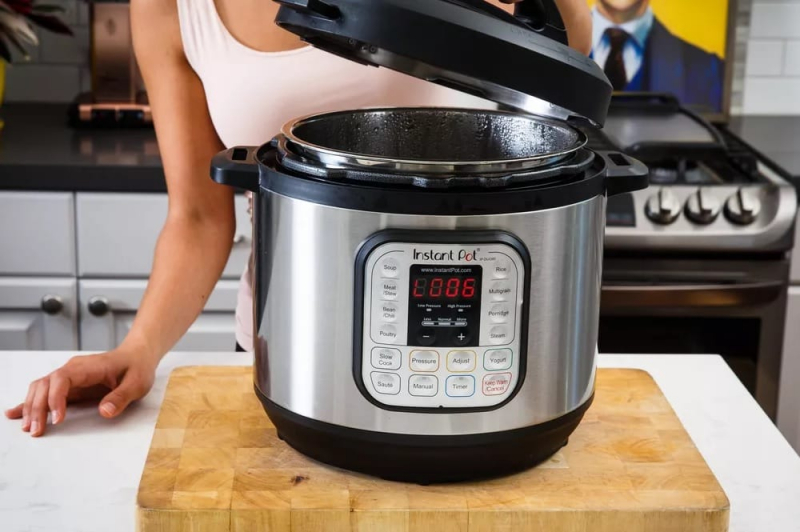
You can wash the whole Instant Pot lid in the dishwasher -
For smaller veggies and pieces of meat, the Instant Pot's cook times are especially remarkably short. Asparagus can be cooked in the machine at high pressure in a matter of seconds. According to reports, broccoli cooks instantly and shrimp cooks in about one minute. The time it takes to cook things once the Instant Pot reaches pressure is what makes these amazingly quick speeds come with a major caveat. The device typically takes at least 10 minutes to pressurize; if you're preparing a large quantity of food or using frozen components, this time may increase.
The pressure must then be released in order to access your meal, which might take up to 30 minutes if you use the natural release. That zero-minute broccoli has suddenly changed into a 45-minute vegetable. Because of this, you should generally reserve your Instant Pot for dishes that require a lot of time to prepare. Large pieces of braised meat, dried beans, and homemade stock all cook in a matter of minutes as opposed to hours thanks to the Instant Pot. Using the Instant Pot in place of traditional cooking techniques won't result in significant time or energy savings for small items like steamed vegetables and chicken breasts.

The Instant Pot's lightning-fast cook times are a little misleading 
The Instant Pot's lightning-fast cook times are a little misleading -
Your Instant Pot's silicone sealing ring is slightly porous and has a tendency to retain the flavors of the food you cook in the pot. The scent shouldn't accumulate if you wash it right away after each usage, but if you've been ignoring your ring, you might need to give it a thorough cleaning. Fortunately, you can remove the stench from your sealing ring and restore its original scent by using the steam feature of your Instant Pot.
Your ring may be steam cleaned quickly, easily, and affordably. If you don't like the vinegar scent, you may substitute water and a lemon peel for the white vinegar while filling your pot. Press the "steam" button after sealing the lid with the problematic silicone ring. After two minutes of cooking, remove the seal and wipe the ring with water. The aroma from the Instant Pot pot roast dish from last week ought to be entirely gone. According to the Food Network, using two distinct sealing rings can prevent flavor contamination if you use your Instant Pot to cook both sweet and savory meals.
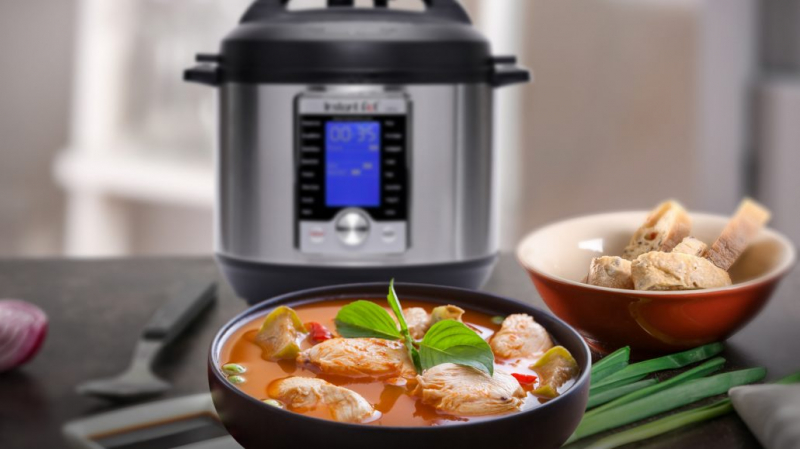
If your sealing ring is getting stinky, steam it with vinegar 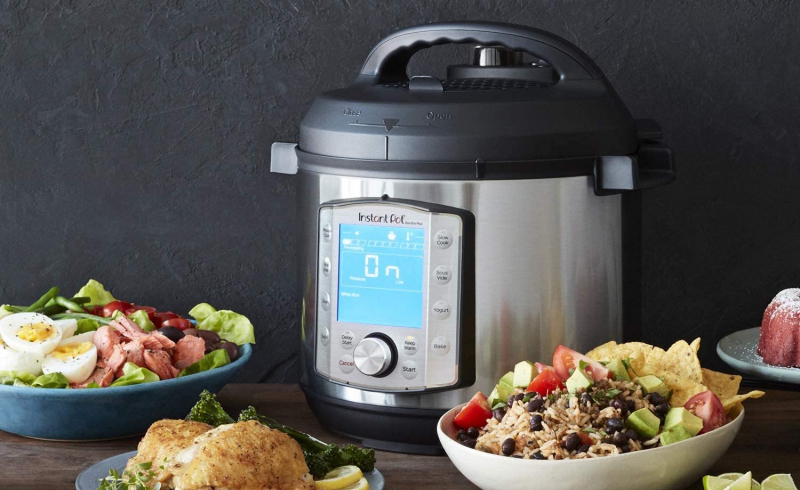
If your sealing ring is getting stinky, steam it with vinegar -
If you adore your Instant Pot as much as everyone else who has one does, you'll want to make as many meals as you can in it. Sadly, you can only cook one thing at a time due to the device's construction. The pot-in-pot method has been developed by clever Instant Pot aficionados as a way to simultaneously cook two different foods. A base layer of food, typically a grain like rice, is added first. Rice is prepared as usual with the addition of water, and a different dish is then placed inside a small pot or heat-resistant bowl that is placed on top.
You'll be rewarded with a main meal and a side dish that are both ready at the same time if you close the lid and proceed with cooking as usual. When the meal is prepared, you may make little handles out of aluminum foil to help pull out your tiny saucepan. The pot-in-pot technique isn't limited to simultaneous cooking of two items. Additionally, you may prepare foods that don't have enough liquid for the Instant Pot or reheat frozen meals with it. Simply pour water to the Instant Pot's bottom, add a trivet or steamer basket, and then place the small pot on top to cook.
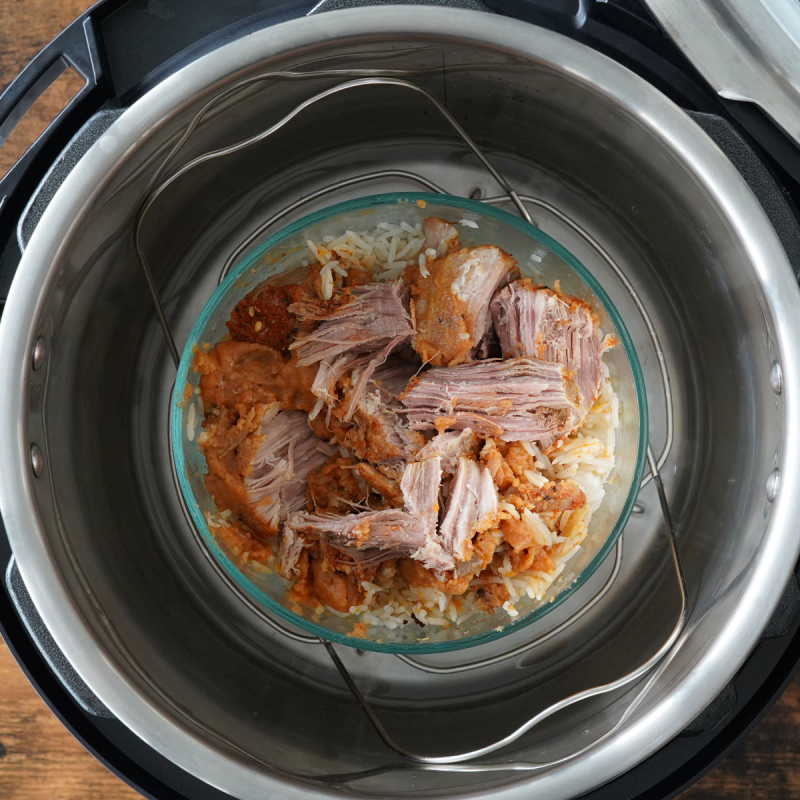
You can cook multiple things at once with the pot-in-pot method 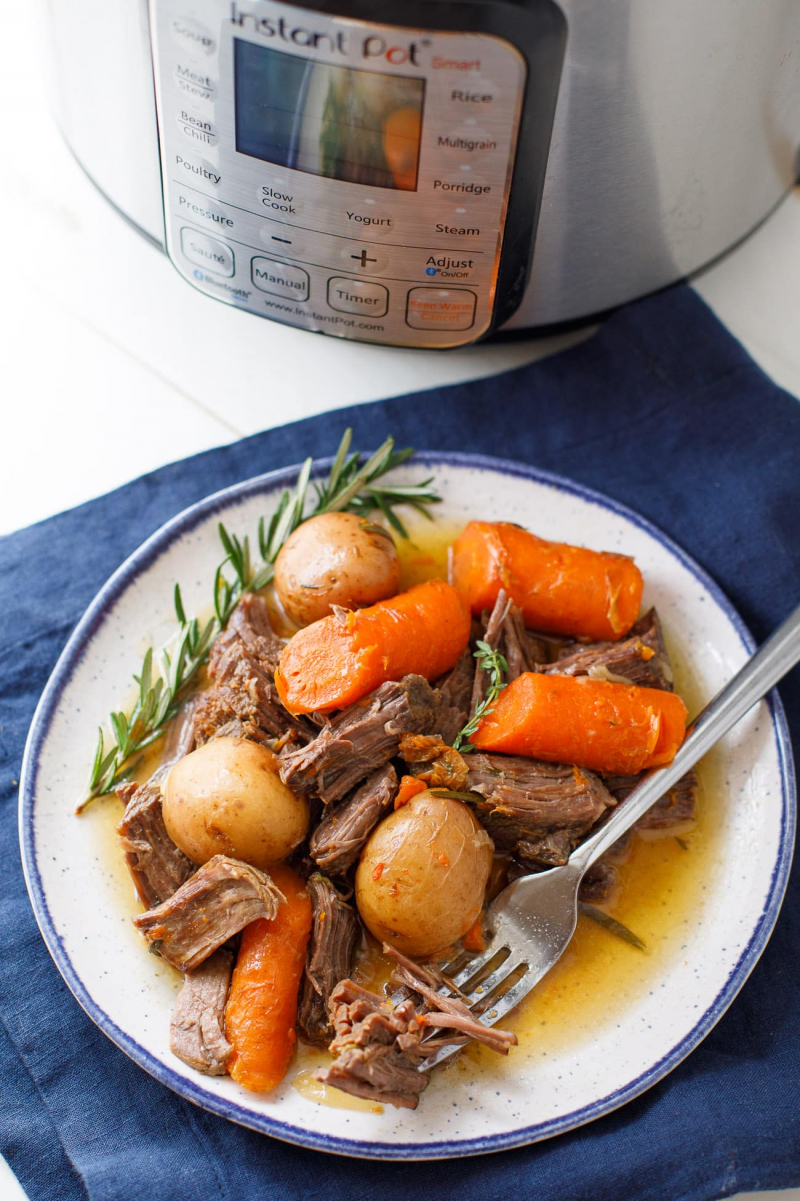
You can cook multiple things at once with the pot-in-pot method -
Even though the Instant Pot is a solid, dependable product, you should check that it functions properly before adding any actual food to it. Do you really want a pint of gravy and a half-cooked pot roast all over your kitchen walls? Before you begin cooking, a quick water test will confirm that everything is in working order. Once you've completed this, you can assume your pot is ready to use.
According to the directions on the Instant Pot website, all you need to do for this initial test is add three cups of water to the inner pot, pressure cook for five minutes on high, and then start the fast release. This checks to see if the pot reaches pressure and temperature. Additionally, it confirms that the pressure release valve is functioning properly and informs you that the "warm" function will activate after cooking is finished.
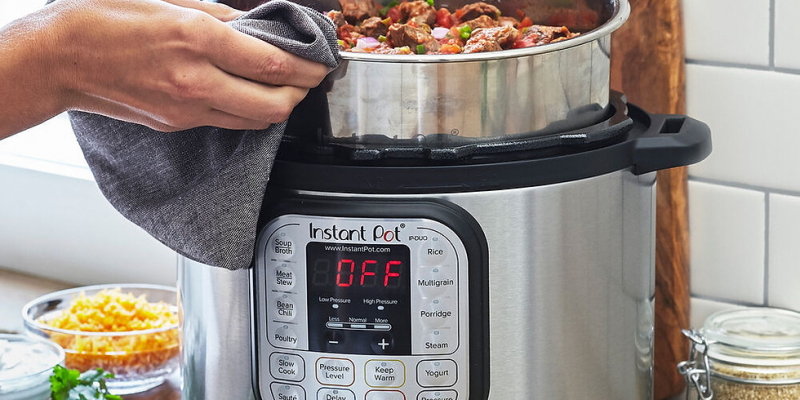
Do a water test before you cook anything 
Do a water test before you cook anything -
The little wire device that came with your Instant Pot is the trivet. It is used to cook foods that should not be cooked in water. This can be anything from a huge roast like a whole chicken to a dessert like cheesecake. It's also the ideal method for steaming (rather than boiling) eggs in your Instant Pot.
Some people dislike the trivets that come with Instant Pots, despite the fact that they are a really handy accessory. Since they are constructed of stainless steel, there is a chance that they will scratch the inner pot. Furthermore, during cooking, that metal may become quite hot. Because of this, it could be challenging to remove your meal out of the pot using the trivet's handles. The legs of Instant Pot trivets are also quite short, so you have to be cautious to use just enough water to get the pot to pressure without touching your food. A trivet that has been improved will be your buddy in light of all these issues.
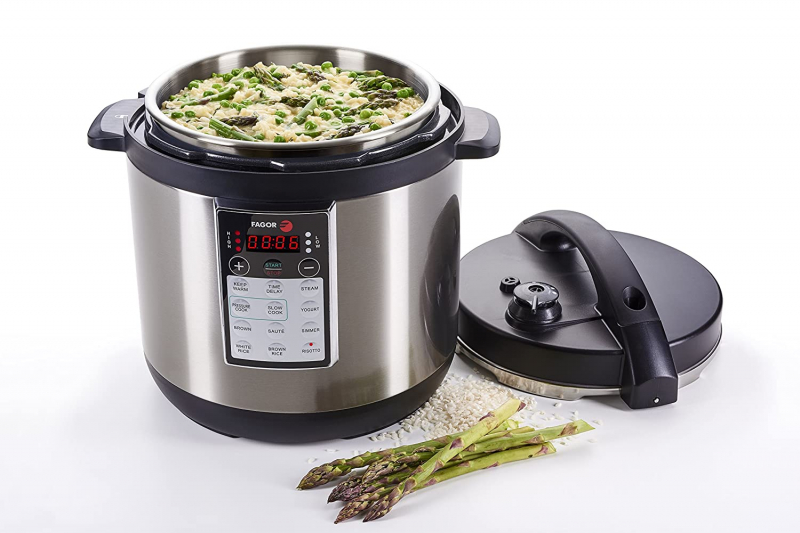
Replace the trivet with an aftermarket one 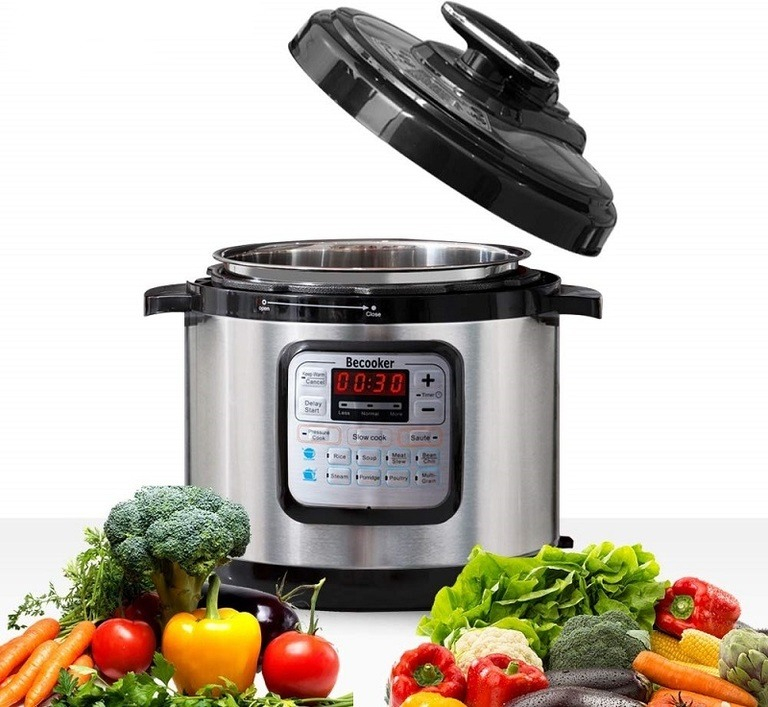
Replace the trivet with an aftermarket one -
The basic Instant Pot trivet's large gaps are another drawback. The trivet can potentially be used for steaming, but only for meals that are substantial enough to stay on it. Use a steamer basket like this certified Instant Pot type to stop this from happening. You won't need to be concerned about food particles getting into your cooking liquid because the basket is composed with a pretty thin mesh.
This type of steamer basket is an excellent purchase because steaming is the best way to cook several meals in an Instant Pot. Fish, shrimp, and chicken breast are all excellent possibilities for steaming. In the Instant Pot, steamed veggies also cook well and retain more of their taste and nutritional value than when they are boiled.
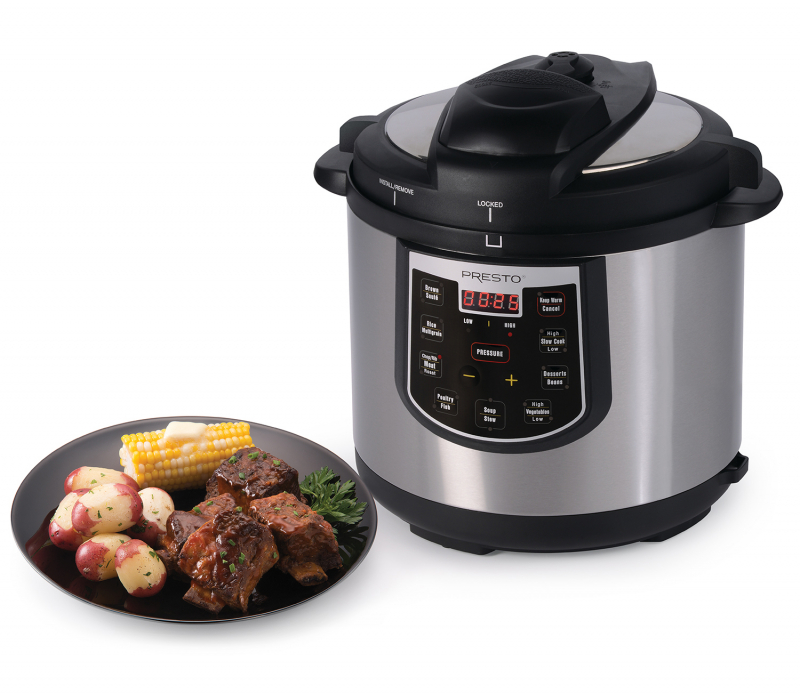
Use a steamer basket for delicate foods 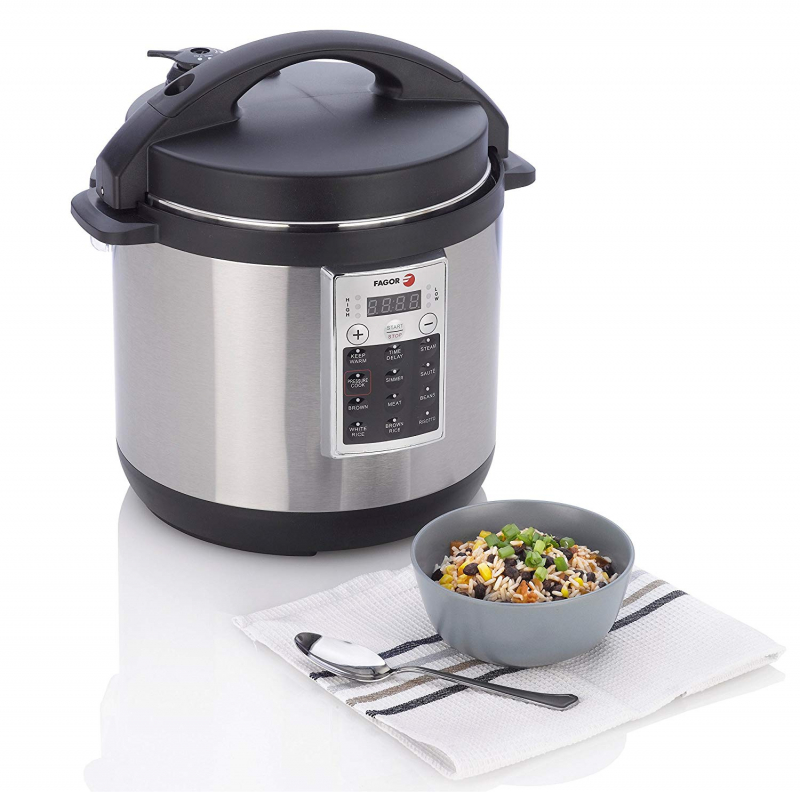
Use a steamer basket for delicate foods -
The official handbook for the 2018 Instant Pot Duo series states that your pressure cooker needs at least 18 fluid ounces, or slightly more than two cups, of water to operate. The firm has recently reduced this to one cup. Please note that cooking with less water than that is against the manufacturer's instructions and is done at the user's own risk. But you could discover that for certain components, pressure cooking just only a fraction of a cup of water.
A lot of vegetable varieties have a high water content, and a lot of that moisture is lost while cooking. Therefore, while pressure cooking them, you may get away with merely adding a small amount of water to the pot. Although there are many other vegetables with a lot of inherent moisture, the blog specifically mentions mushrooms, zucchini, and soaked beans as falling into this category.
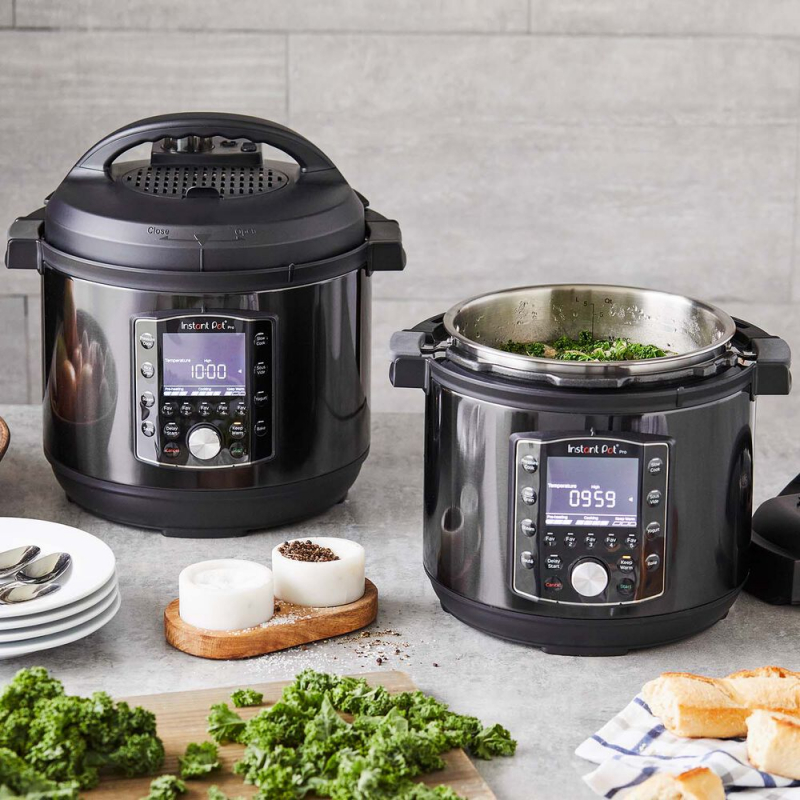
Stop using too much water in your Instant Pot 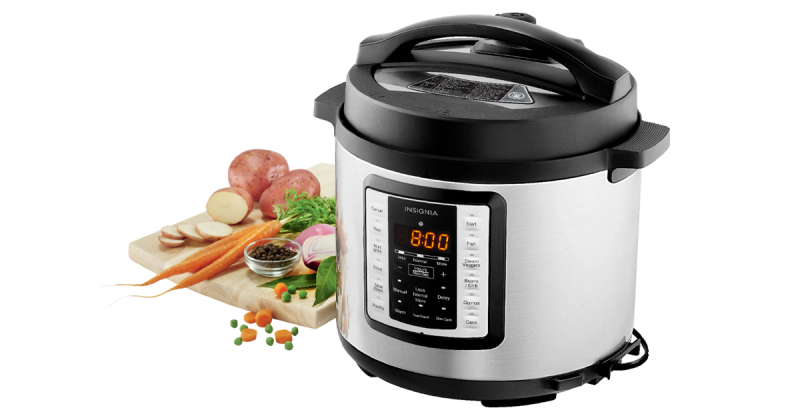
Stop using too much water in your Instant Pot -
Bringing the contents of the pot up to a high enough temperature and pressure takes up a significant portion of the total cooking time for pressure-cooked items in the Instant Pot. Therefore, it stands to reason that adding your liquid to the pot while it's already hot will significantly cut down on this time. A decent kettle or even a pot on the stove will boil water more quickly than an Instant Pot, yet the heating element in an Instant Pot will undoubtedly perform the job of warming up your meal.
This assumption is supported by a Reddit discussion. One commenter adds that before beginning to cook under pressure, you may even pre-heat your liquid using the sauté feature. You can start heating your broth, water, or whatever while you prepare the other ingredients for your dish, which could be a great way to multitask.
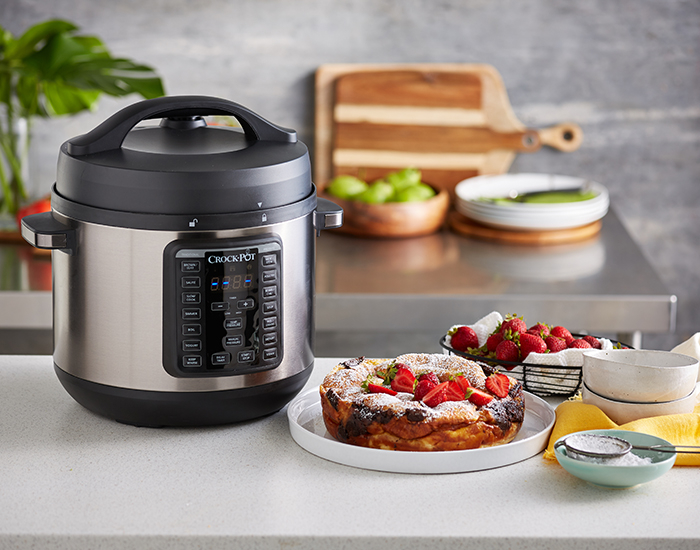
Start with hot water to cut down your cooking time 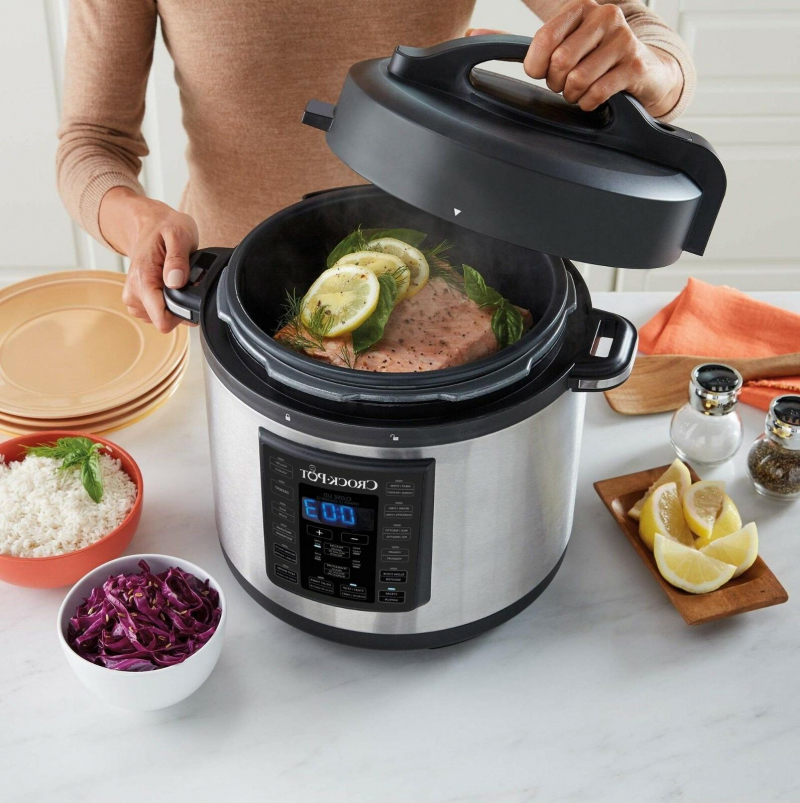
Start with hot water to cut down your cooking time -
You don't want an explosive situation on your hands, therefore it's critical to take all required safety precautions when cooking under pressure. The inner pot may only be filled to a maximum of two-thirds of the Instant Pot's entire volume, according to the manufacturer. This maximum fill line is conveniently placed on the inside of the pot. Some foods, such as grains and beans, either expand significantly when cooking or have a propensity to froth and spray. Because the froth from certain meals might block your Instant Pot's release valve, you should only fill the pot halfway for them.
But what occurs if a pressure cooker is overfilled? Nothing nice, that much is certain. A pressure cooker that is overfilled will produce too much pressure, which might pulverize your food. On a scarier note, overloading your Instant Pot might undermine its safety safeguards, creating a scenario that could be hazardous.
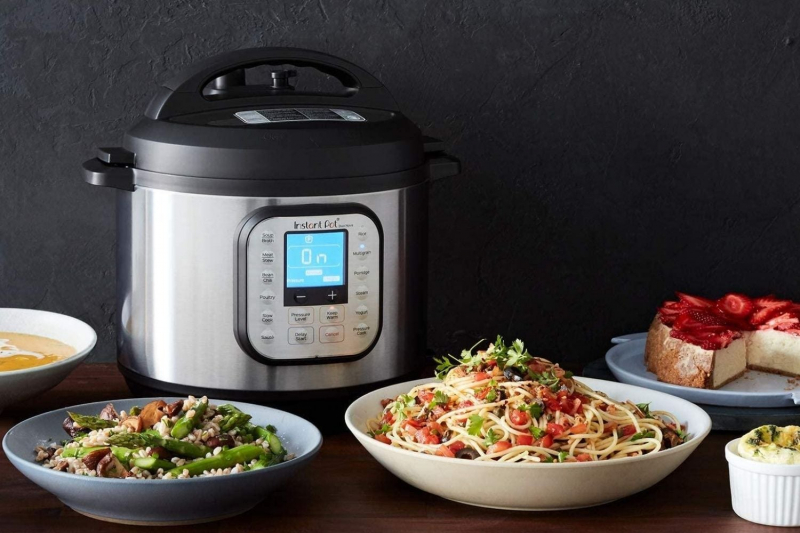
Don't overfill your Instant Pot 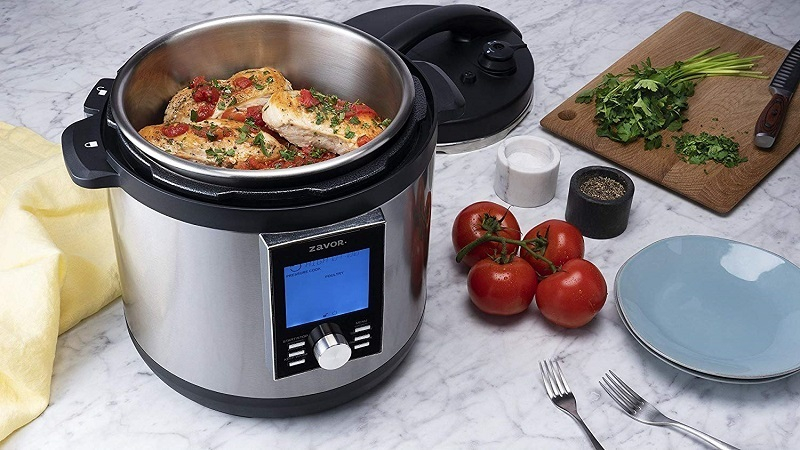
Don't overfill your Instant Pot -
Even while you may be aware that the mouthwatering aroma of the pulled pork or pot roast you just cooked in your Instant Pot will make you want to eat it right now, rushing the process might lead to dry, stringy meat. The same justification applies as to why you should wait to chop into a grilled steak or roast chicken: When you slice hot meat, the liquids spill out onto the cutting surface rather than remaining inside the flesh, where they should be. Because of this, meat should rest for up to 20 minutes before consumption, according to the Instant Pot's manufacturers.
Tidbits claims that you can complete this resting step by choosing a slow pressure release rather than a quick release. The meat will be able to unwind and the juices will be able to circulate. Although this rule does not apply to meats that are completely submerged in liquid because the broth traps the juices in and keeps the meat pieces moist, they still concur with this statement.
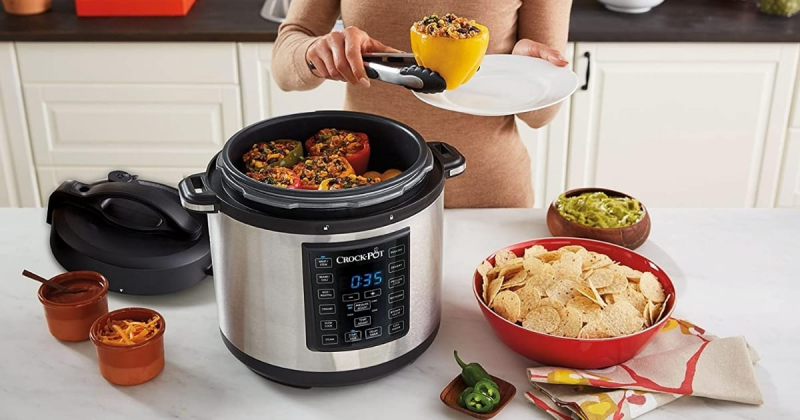
Let large cuts of meat rest before digging in 
Let large cuts of meat rest before digging in
























